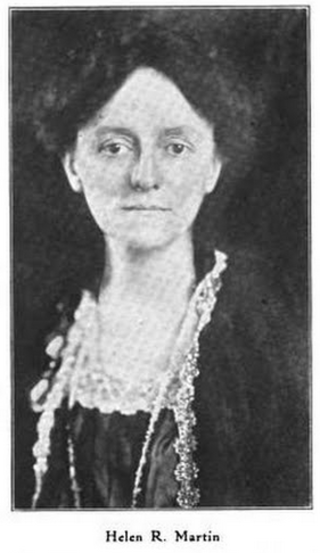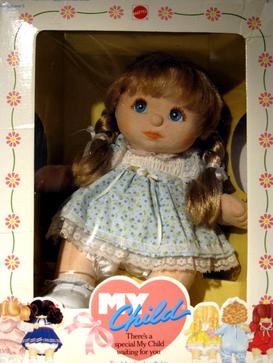
Witness is a 1985 American neo-noir crime thriller film directed by Peter Weir. The film stars Harrison Ford, Kelly McGillis and Lukas Haas, with Jan Rubeš, Danny Glover, Josef Sommer, Alexander Godunov, Patti LuPone and Viggo Mortensen. Its plot focuses on a police detective protecting an Amish woman and her son, who becomes a target after he witnesses a brutal murder in a Philadelphia railway station.

A doll is a model typically of a human or humanoid character, often used as a toy for children. Dolls have also been used in traditional religious rituals throughout the world. Traditional dolls made of materials such as clay and wood are found in the Americas, Asia, Africa and Europe. The earliest documented dolls go back to the ancient civilizations of Egypt, Greece, and Rome. They have been made as crude, rudimentary playthings as well as elaborate art. Modern doll manufacturing has its roots in Germany, from the 15th century. With industrialization and new materials such as porcelain and plastic, dolls were increasingly mass-produced. During the 20th century, dolls became increasingly popular as collectibles.

Plain people are Christian groups in the United States, characterized by separation from the world and by simple living, including plain dressing in modest clothing. Many plain people have an Anabaptist background. These denominations are largely of German, Swiss German and Dutch ancestry, though people of diverse backgrounds have been incorporated into them. Conservative Friends are traditional Quakers who are also considered plain people; they come from a variety of different ethnic backgrounds.

The Nebraska Amish, also called Old Schoolers, are a relatively small affiliation of the Amish. They are the most conservative subgroup of Amish, indicated not only by their use of technology but also by their particular style of dress. They emerged in 1881 as a conservative split from the Byler Amish, who themselves emerged as the first conservative splinter group from the Amish mainstream in 1849.

Bonnet has been used as the name for a wide variety of headgear for both sexes—more often female—from the Middle Ages to the present. As with "hat" and "cap", it is impossible to generalize as to the styles for which the word has been used, but there is for both sexes a tendency to use the word for styles in soft material and lacking a brim, or at least one all the way round, rather than just at the front. Yet the term has also been used, for example, for steel helmets. This was from Scotland, where the term has long been especially popular.

A rag doll is a children's toy. It is a cloth figure, a doll traditionally home-made from spare scraps of material. They are one of the oldest children's toys in existence. Today, many rag dolls are commercially produced to mimic aspects of the original home-made dolls, such as simple features, soft cloth bodies, and patchwork clothing.
Rumspringa, also spelled Rumschpringe or Rumshpringa, is a rite of passage during adolescence, translated from originally Palatine German and other Southwest German dialects to English as "jumping or hopping around", used in some Amish communities. The Amish, a subsect of the Anabaptist Christian movement, intentionally segregate themselves from other communities as a part of their faith. For Amish youth, the Rumspringa normally begins at age 16 and ends when a youth chooses either to be baptized in the Amish church or to leave the community. For Wenger Mennonites, Rumspringa occurs mostly between ages of 17 and 21.
The Ordnung is a set of rules for Amish, Old Order Mennonite and Conservative Mennonite living. Ordnung is the German word for order, discipline, rule, arrangement, organization, or system. Because the Amish have no central church government, each assembly is autonomous and is its own governing authority. Thus, every local church maintains an individual set of rules, adhering to its own Ordnung, which may vary from district to district as each community administers its own guidelines. Among the Amish, these rules are largely unwritten, yet they define the very essence of Amish identity. Conservative Mennonites refer to Ordnung by the English terms "discipline" or "standard", and their rules are usually written.
Donald B. Kraybill is an American author, lecturer, and educator on Anabaptist faiths and culture. Kraybill is widely recognized for his studies on Anabaptist groups and in particular the Amish. He has researched and written extensively on Anabaptist culture. He is Distinguished Professor Emeritus at Elizabethtown College and Senior Fellow Emeritus at Elizabethtown's Young Center for Anabaptist and Pietist Studies.

The history of quilting, the stitching together of layers of padding and fabric, may date back as far as 3400 BCE. For much of its history, quilting was primarily a practical technique to provide physical protection and insulation. However, decorative elements were often also present, and many quilts are now primarily art pieces.

Helen Reimensnyder Martin was an American author.
John A. Hostetler was an American author, educator, and scholar of Amish and Hutterite societies. Some of his works are still in print.

My Child dolls are a toy made by Mattel from 1985-1988. Most had felt "skin" on their heads although some had vinyl skin.

Plain dress is a practice among some religious groups, primarily some Christian churches in which people dress in clothes of traditional modest design, sturdy fabric, and conservative cut. It is intended to show acceptance of traditional gender roles, modesty, and readiness to work and serve, and to preserve communal identity and separation from the ever-changing fashions of the world. For men, this often takes the form of trousers secured by suspenders, while for women, plain dress usually takes the form of a cape dress along with a headcovering.

The Amish, formally the Old Order Amish, are a group of traditionalist Anabaptist Christian church fellowships with Swiss and Alsatian origins. As they maintain a degree of separation from surrounding populations, and hold their faith in common, the Amish have been described by certain scholars as an ethnoreligious group, combining features of an ethnicity and a Christian denomination. The Amish are closely related to Old Order Mennonites and Conservative Mennonites—denominations that are also a part of Anabaptist Christianity. The Amish are known for simple living, plain dress, Christian pacifism, and slowness to adopt many conveniences of modern technology, with a view neither to interrupt family time, nor replace face-to-face conversations whenever possible, and a view to maintain self-sufficiency. The Amish value rural life, manual labor, humility and Gelassenheit.

The Amish believe large families are a blessing from God. Amish rules allow marrying only between members of the Amish Church. The elderly do not go to a retirement facility; they remain at home. As time has passed, the Amish have felt pressures from the modern world; their traditional rural way of life is becoming more different from the modern society. Isolated groups of Amish populations may have genetic disorders or other problems associated with closed communities. Amish make decisions about health, education, and relationships based on their Biblical interpretation. Amish life has influenced some things in popular culture. As the Amish are divided into the Old Order Amish, New Order Amish, and Beachy Amish, the way of life of families depends on the rule of the church community to which they belong.
A wamus is a type of jacket worn in the United States. The term is applied to several different types of upper-body garment.

The Amish faith is a highly traditional Christian tradition in the Anabaptist branch of the Reformation. It is practiced almost exclusively in the United States and Canada with large settlements in Pennsylvania, Ohio, and Indiana. Because the traditional beliefs of this religion can conflict with the ideals of mainstream culture, the role of Women in Amish society is visibly different from that of women in the surrounding communities.

The Kauffman Amish Mennonites, also called Sleeping Preacher Churches or Tampico Amish Mennonite Churches, are a plain, car-driving branch of the Amish Mennonites whose tradition goes back to John D. Kauffman (1847–1913) and Noah Troyer (1831–1886) who preached while being in a state of trance and who were seen as "sleeping preachers".












